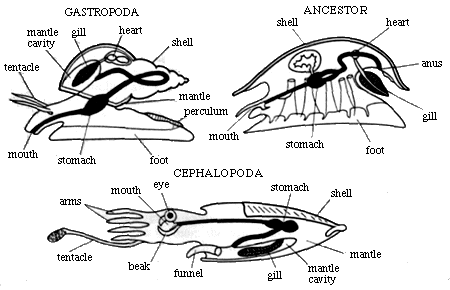 | Figure 3: The class Cephalopoda is named from the close union of the head with the foot, which evolved and subdivided to produce two new types of organs. |
The emergence of the cephalopods represents a more important adaptive step towards being a free-swimmer. The direct success of class Cephalopoda emerges from the hydrostatic system which ensures the organism's buoyancy, and the acquisition of a chambered shell and siphon are the features that ensures this. The mantle cavity is a constant feature of all mollusks and has been put to various uses. The outlet of the mantle has undergone a differential modification, most markedly in the cephalopods where water, taken into the mantle cavity and squirted out as a jet through a funnel, is the primary means of propulsion.
|


